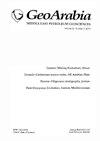Seismic modelling of a fractured carbonate reservoir in Abu Dhabi, United Arab Emirates
引用次数: 8
Abstract
The problem of identifying and quantifying the brittle deformation of carbonate reservoirs both in the United Arab Emirates (UAE) and elsewhere is addressed. Naturally occurring fractures may substantially increase or decrease the permeability and porosity of reservoirs, and therefore knowledge of location, orientation, density and connectivity of fractures is required to optimise hydrocarbon production. A rock containing parallel fractures can be seismically anisotropic, provided the vertical and horizontal extent and spacing of the fractures is small compared to the seismic wavelength. Seismic anisotropy may be detectable from attributes of pre-stack 3-D seismic data including reflection amplitude variation with offset and azimuth (AVOA). However, in carbonates seismic-velocity anisotropy can result from many different factors, including present-day horizontal stress anisotropy, sedimentological features such as clinoforms, and geological structure. We present a methodology for determining whether a proposed reservoir-fracture model is consistent with the observed seismic data. The approach includes modelling the seismic anisotropy where an essential input parameter is the compliance of the fractures. Since so little is known about this key parameter, we determine an upper bound to fracture compliance from well data and existing laboratory and field data and consequently obtain an upper bound to the seismic anisotropy that might be detected. We apply our method to data from an onshore carbonate oilfield in Abu Dhabi, United Arab Emirates, where analysis of core, log and 3-D post-stack seismic data indicates that open or partially open fractures may be pervasive and could have a dominant influence on reservoir production. Due to poor AVOA data quality our results are inconclusive. However, this case study is a demonstration of the methodology that could be applied elsewhere.阿拉伯联合酋长国阿布扎比裂缝性碳酸盐岩储层地震模拟
解决了阿拉伯联合酋长国(UAE)和其他地区碳酸盐岩储层脆性变形的识别和量化问题。天然裂缝可以大大增加或降低储层的渗透率和孔隙度,因此需要了解裂缝的位置、方向、密度和连通性,以优化油气产量。如果裂缝的垂直和水平范围和间距与地震波长相比较小,则含有平行裂缝的岩石可能具有地震各向异性。利用叠前三维地震数据的属性,包括反射振幅随偏移量和方位角的变化(AVOA),可以检测到地震的各向异性。然而,在碳酸盐岩中,地震速度的各向异性可能是由许多不同的因素造成的,包括现今水平应力的各向异性、沉积学特征(如斜形)和地质构造。我们提出了一种方法来确定所提出的储层-裂缝模型是否与观测到的地震数据一致。该方法包括模拟地震各向异性,其中一个重要的输入参数是裂缝的顺应性。由于对这一关键参数的了解甚少,因此我们根据井数据、现有实验室和现场数据确定裂缝顺度的上限,从而获得可能检测到的地震各向异性的上限。我们将该方法应用于阿拉伯联合酋长国阿布扎比的一个陆上碳酸盐岩油田的数据,该油田的岩心、测井和三维叠后地震数据分析表明,开放或部分开放的裂缝可能普遍存在,并且可能对储层生产产生主导影响。由于AVOA数据质量差,我们的结果是不确定的。然而,这个案例研究是一种可以应用于其他地方的方法的演示。
本文章由计算机程序翻译,如有差异,请以英文原文为准。
求助全文
约1分钟内获得全文
求助全文
来源期刊

Geoarabia
地学-地球科学综合
自引率
0.00%
发文量
0
审稿时长
>12 weeks
期刊介绍:
Cessation. Published from 1996 to 2015, GeoArabia, The Journal of the Middle Eastern Geosciences was a quarterly journal covering the petroleum geosciences in the Middle East. The journal covers subjects such as: - sedimentology - tectonics - geophysics - petroleum reservoir characterization
 求助内容:
求助内容: 应助结果提醒方式:
应助结果提醒方式:


